Multifidus muscle
Introduction
The Multifidus muscle is a group of short, triangular muscles that along with the semispinalis and rotatores include the transversospinal group of deep back muscles. They are the thickest muscles in the transversospinal group and are shorter than semispinalis, but lengthier than rotatores. The Multifidus muscles are located on either side of the vertebral column, also extending from the cervical spine to the lumbar spine. The levels are regionally separated into cervical multifidus muscle, thoracic multifidus muscle, and also lumbar multifidus muscles.
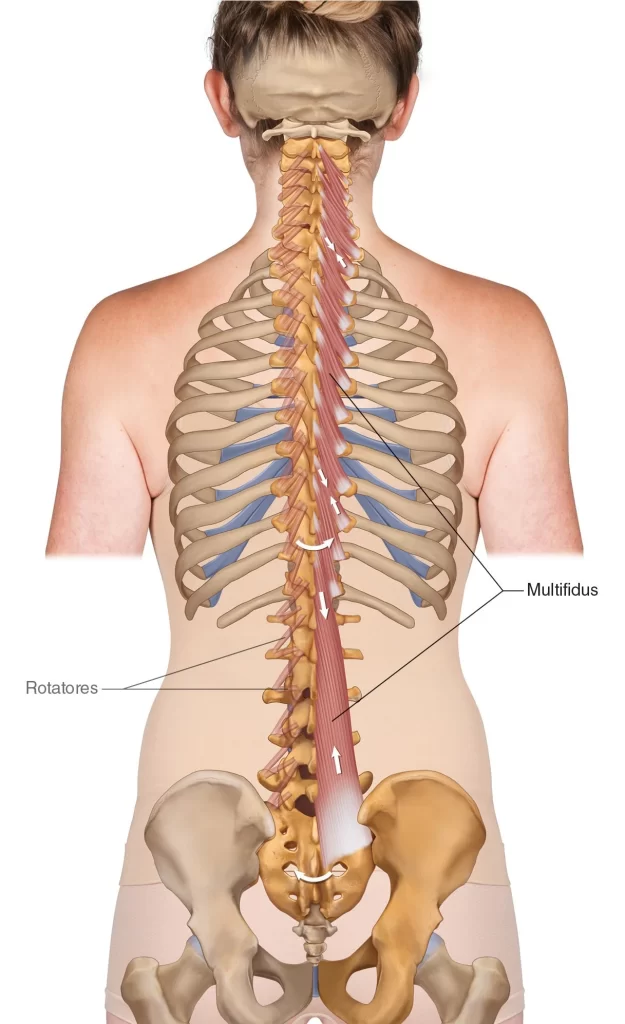
Each of the multifidus muscles bridges over three to six vertebral levels, traversing between the transverse and also at spinous processes of certain cervical, thoracic, and also lumbar vertebrae. Although short, multifidus muscles support several movements of the vertebral column; when contracting bilaterally they extend the spinal column, while unilateral contraction helps the lateral flexion motion of the spine to the similar side move and also the rotation motion of the spine to the opposite flank.
Origin of Multifidus muscle
The Cervical multifidus muscles arise from the superior articular processes of the C4 to C7 vertebrae. The Thoracic multifidus muscles originate from the transverse processes of the thoracic vertebrae. The posterior side of the sacrum bone, as well as the mammillary processes of the lumbar vertebrae, are where the lumbar multifidus muscles get their fibers from. In addition, some fibers also originate from the posterior superior iliac spine of the ilium and the posterior sacroiliac ligament.
As a portion of the transversospinal muscles group, the multifidus muscles are located in the third or deep layer of deep muscles of the back. It lies deep in the erector spinae, semispinalis cervicis, and thoracic, while it is situated superficial to rotatores muscles. Running via the groove between the spinous and also transverse processes of vertebrae, multifidus muscles overlie the laminae of cervical and thoracic vertebrae and the posterior surface of the sacrum.
Insertion
Cervical multifidus muscles extend superomedial to insertion on the lateral element and the tips of the spinous processes of C2 to C5 vertebrae. Thoracic multifidus muscle fibers also accept a superomedial course to insertion variably on the spinous processes of the vertebrae 2 to 5 levels beyond their origin. Fibers of lumbar multifidus muscles traverse superiorly to insertion on the lateral exterior and also apices of spinous processes at 2 to 5 vertebrae levels above their origin.
Nerve supply
The Multifidus muscles are nerves delivered by the medial side branches of the posterior rami of the spinal nerves in the corresponding cervical area, thoracic area, and also lumbar regions. The intrinsic or deep back primary nerve supply originates from the dorsal rami of the spinal nerves.
Blood supply
The Multifidus muscles obtain arterial blood supply from multiple arteries also along the length of the vertebral column. These are also as observed:
Cervical region: vertebral, deep cervical, and also occipital arteries
Thoracic region: dorsal branches of posterior intercostal and also subcostal arteries
Lumbar region: lumbar artery and lateral sacral arteries
Excluding the occipital artery, which is a branch of the external carotid artery, the origin of the arteries that supply the cervical multifidus muscle is the subclavian artery. The arteries in the thoracic area and also lumbar areas are direct branches of the aorta.
Actions of Multifidus muscle
All of the transversospinalis muscles, of which the multifidus muscle is one, are extensors of the back and also neck region. The multifidus muscles and semispinalis muscles group have also been defined as rotator motions by some texts and relinquished in others. Evidence suggests to the multifidus muscles are continuously active in upright postures. The multifidus muscles are probably active in all anti-gravity activity.
The multifidus muscles stabilize the vertebrae as the spine moves. It is thought that the unique design of the multifidus muscle gives it additional strength. When the oblique abdominal muscles contract to assemble trunk rotation motion, also some flexion of the trunk happens. The multifidus muscles oppose this trunk flexion motion sustaining a pure axial rotation motion, therefore performing as stabilizers during trunk rotation.
Clinical Relevance
Core activation Four-point kneeling alternate legs: The multifidus muscles are an important stabilizer of the lumbar spine. It functions concurrently with the transversus abdominis muscle and pelvic floor muscles for spine stability.
Multifidus muscle weakness and atrophy are associated with chronic lower back aches. Core stabilization schedules are suggested to enhance the multifidus muscles cross-section area and also decrease low back pain.
Trigger points in the multifidus muscles decrease the contraction efficiency of the transversus abdominis muscles due to diminished reciprocal side inhibition. Dry needling of the multifidus trigger points increased the thickness of the transverses abdominus during contraction, exhibiting that multifidus muscles dry needling can be used for the treatment of low back pain.
Length Tension Relationship: The multifidus muscles have a high cross-section area so their force-generating capability is high and has a low fiber length so their muscle expedition is low.
Treatment
Core activation exercise: The multifidus muscles are one of the important core muscle stabilizers, recreating an important role in static and dynamic spinal stability.
Core stabilization programs are indicated to increase the multifidus muscle cross-section area and also decrease low back pain, with weakness in the multifidus muscles being associated with low back pain. Core muscles are recorded for their assistance to spinal stability and are important in home exercise programs suggested to people with low back pain in physical therapy.
Retraining the stabilizing muscles of the core is accomplished in a series of steps. The first step is to understand to isolate the muscle. The second step is to understand to co‐contract it in conjunction with the other muscles of the core. The final stage is to co‐contract the whole core (connect simultaneously to the pelvic floor muscle, transversus abdominis & multifidus muscles) in coordination with the larger superficial muscles during functional movements.
Plank core exercise: Investigators have classified multifidus muscle fiber types by layers:
The deepest layer occurs to contribute more strength and stability to the spine than the superficial layers. Possibly because of the deep layer four with the other layers). The resultant shorter “excursion” of the deep layer of the multifidus muscles indicates that when the muscles contracts, it contributes to more compression-type movement at the spinal joint it involves compared to other back extensor muscles and the more superficial layers of the multifidus muscle.
The final stage is to remember to utilize the core during everyday life activities. Each time you get out of the chair, lift, bend, or reach, this regional stabilizing system should be working at a low level. The goal is to prepare the body to resume its normal stabilization strategy of connecting to the core before movement initiates.
Multifidus exercise :
Deep squat: Start with legs spread apart. Squat down as far as probable, assembling sure to keep the weight in the heels. It is important to maintain the head up and looking forward. At the base of the squat, hold the position for five seconds. Do three sets of ten and repeat three periods a week.

The Cat-Cow Pose: Begin the posture with hands and knees on the floor, with the hands directly under the shoulders and also knees directly under the hips. Begin with the spine in a neutral position and also inhale. Upon exhale, look downward and round the spine up toward the roof. Maintain this position for ten seconds. Inhale and arch the back downward by raising the head and the tailbone upward and holding the position for ten seconds. Replicate this pose ten to twelve times a day.
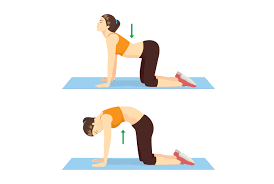
FAQ
What is the multifidus structure and function?
The multifidus muscles are an important stabilizer of the lumbar spine. It functions combined with the transversus abdominis muscles and pelvic floor muscles for spine stability. Multifidus muscle weakness and also atrophy is associated with chronic low back pain.
What is the main function of the multifidus muscle?
The multifidus muscles stabilize the vertebrae as the spine moves. It is thought that the unusual design of the multifidus endows it with extra strength. When the oblique abdominal muscles contract to construct trunk rotation motion, some flexion motion of the trunk also occurs.
What is the multifidus even known as?
The multifidus muscles are a sequence of long, narrow muscles located on either side of the spinal column that sustains and stabilize the lower part of the spine, also called the lumbar spine. It’s also directed to the lumbar multifidus muscles.
What exercise activates multifidus muscles the greatest?
The movement level of the multifidus muscles was also highest during the back bridge exercises. The curl-up exercise constructed the highest activity level for the rectus abdominis muscles and also the back bridge exercise, with single-leg lift exercises developing the highest erector spinae muscle activity.
What level is multifidus muscles?
Each of the multifidus muscles bridges over three to six vertebral groups, transiting between the transverse and also spinous processes of certain cervical, thoracic, and also lumbar vertebrae.

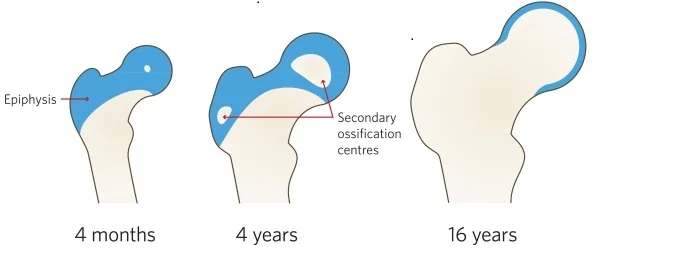
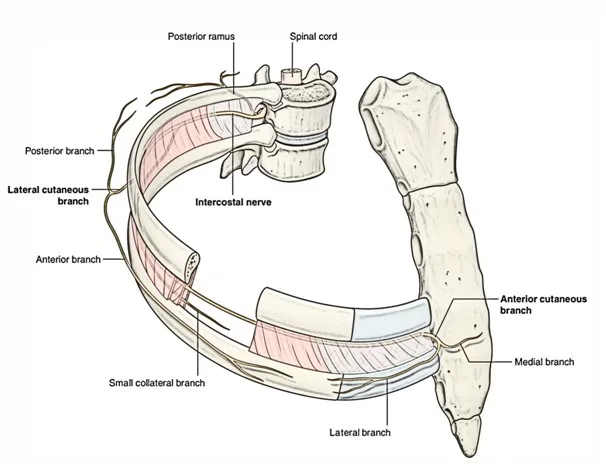
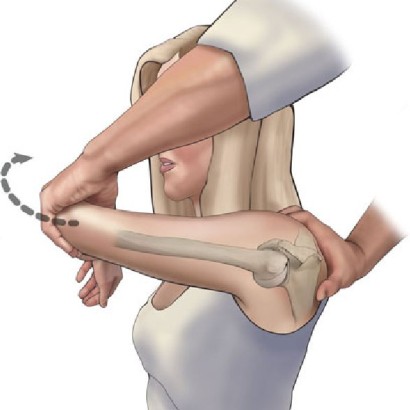

2 Comments